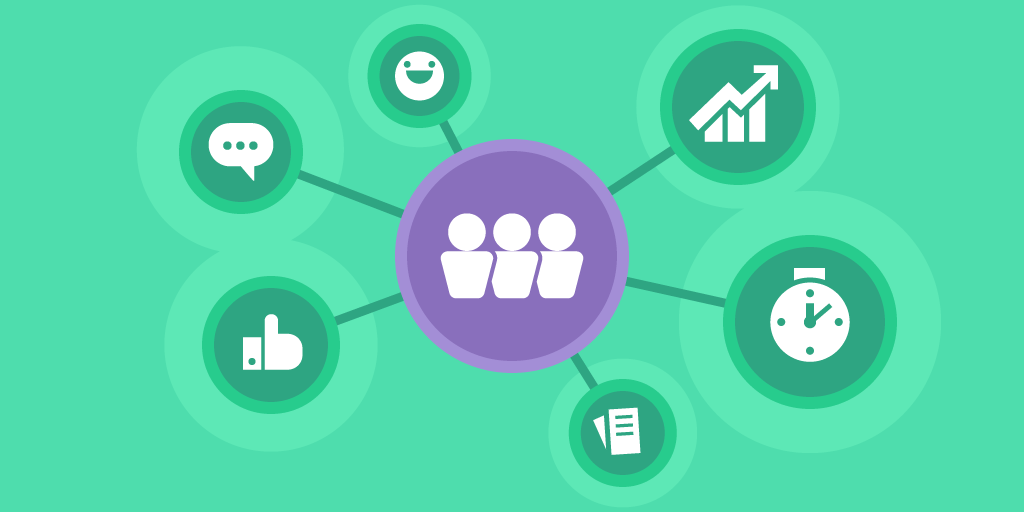Self-service is a trend that keeps on growing. 84% of consumers have used a self-service channel in the last 12 months, with 91% of consumers admitting they would use a self-service channel.
But what’s so good about self-service kiosks, anyway? Apart, of course, from them being the most powerful tool when it comes to improving queue management and customer service.
Let’s find out now why investing in self-service kiosks helps solve queuing problems.
A brief history of self-service
Self-service isn’t something unique to the 21st century. Even back in the day, petrol stations required drivers to fill up their gas tanks themselves.
The first truly automated teller machines appeared in 1977, developed by the University of Illinois student. They had plasma touch screens, and allowed students to find different media and information.
In the 1980s, the kiosk finally entered commercial use. The first such interactive kiosks provided images and videos of products that were not in stock at the moment.
Since then, kiosks have slowly become a staple of retail and click & collect services. Modern tablet kiosks are not unlike vending machines and are used for, among other things:
- self-checkout
- information
- e-ticketing
- wayfinding and points of interest
A few decades later, and self-service has established itself as the future of customer service.
How self-service kiosks work
Self-service kiosks are interactive computer terminals that give customers access to information, check-in and queuing.
(Three sections in, and we’re only now explaining what self-service kiosks are.)
When coming to a location, the first thing the visitors see is a tablet kiosk installed at the entrance or some other key, high-traffic points.
The visitor, intrigued by the strange apparatus, approaches it. The screen is bright and colorful, possibly responsive. It says “Welcome, please sign in!”
The visitor warily touches the screen, and now it says “Enter your name”. They do so, using a digital keyboard, and then follow it up with choosing the appropriate service from the list.
As soon as the check-in is over, the data is recorded and stored for later use.
The benefits of self-service kiosks
Why would people use self-service kiosks? Short answer: they are more convenient.
Long answer: read below.
Faster checkout
Using self-service kiosks leads to dramatically shorter wait times. Having the option to check-in independently lets customers bypass the usual period of wait, and take control of their own queue placement.
Decrease employee workload
By letting visitors take care of their own registration, self-service kiosks noticeably reduce the strain put on your counter staff.
The numbers show that only 5% of customers who experience issues reach out to customer support for help. Which is to say, giving customers the means to solve their issues might be a better way overall.
Not to mention, digitized sign-in allows for quick troubleshooting via emails or SMS notifications.
Cut costs
Decreased workload results in saving labor and time costs. Overall, kiosks process check-ins without the need to flex your operational resources.
Using self-service kiosks helps reduce the costs associated with long waiting times, and free up your budget for more important actions.
Flexibility
Self-service sign-in is adaptable and adjustable. You as a location owner get the freedom to configure the service lines as you see fit.
Apart from helping navigate visitors to the correct desk, self-service kiosks provide other quality-of-life service improvements.
For example, they can make check-in available even outside your working hours. Even when your clerks are away, your visitors can still sign in, no problem.
Don’t want to have customers registering in your off-hours? Put a digital lock on the tablet kiosk to inform visitors that you are closed for the day or will return soon.
Valuable customer data
The advantage of digital kiosks is that you can handpick the options your customers select upon sign-in. The accumulated data is then fed to your frontdesk employees, letting them better understand the customer’s needs even before they meet face-to-face.
For example, a receptionist can now know whether a customer will be paying by card or cash, or which specific employee they are looking for to resolve their issue.
You should use location service data for better customer experiences. The depth of data is only limited by your imagination.
Brand awareness
Last but not least, self-service kiosks provide targeted digital signage that promotes your business.
The kiosks are customizable to fit your brand feel. Your brand’s specific colors and logo are displayed on the kiosk screen and TV.
This helps you achieve a unified service vision and raise your brand awareness.
Self-service kiosks in different industries
He who has once had a taste of self-service will never look at queues the same way. That’s why self-service kiosks are becoming a fixture in many different industries, from hospitals to hospitality.
Let’s take a look at how these kiosks benefit some of the industries.
Self-service kiosks in retail
One of the most common settings for self-service kiosks.
Here, they are mainly used for either self-checkout or self-sign-in, depending on the type of retail operations. The benefits are all the same:
- reducing wait times
- easing the strain on staff
- streamlining the service flow
- acquiring the data used for improving the service
A well-placed tablet kiosk frees up employees for other tasks, allowing to provide enhanced customer service.
Self-service kiosks in healthcare
Self-service healthcare kiosks can take on a multitude of tasks, allowing the staff to concentrate on the most important part of healthcare — the actual healthcare.
Self-service kiosks in hospitals, clinics and pharmacies are designed to allow:
- patients to check themselves in
- visitors to book their hospital visitations
This reduces the hospital wait times usually spent on manually handling the visitors, thus decreasing the strain on reception staff.
Moreover, the registration data collected from walk-in patients helps understand and adapt to patient arrivals and waiting times.
Self-service in the food industry
The food industry, especially the fast food industry, greatly benefits from self-service. Previously, cafes and restaurants heavily used a dated take-a-number system, but more and more facilities are now leaning towards self-service.
Whereas usually food places necessitate a lot of waiting, self-service kiosks help trim the fat off of the ordering process. This much more elegant system gives customers full control over their meal decisions.
You no longer need to stand at the desk waiting for your order, or sit at the table with an incomplete set waiting for the rest of the order.
Also, and I cannot underscore this enough, this system is ideal for introverts who feel like their life choices will be questioned by strangers once they step inside a fast food joint.
Yay for asocial behavior!
Self-service kiosks in banking
Despite the progress with online banking, 60% of Americans still prefer opening a new account in person to using a digital device.
This means that banks experience a lot of physical waiting, which is where self-service kiosks come into play.
Why is this good for bank employees? Because as visitors register themselves, they fill out all the important information regarding the type of service they need.
As a result, a bank teller knows all the details before the customer even walks up to them — whether they’re here for loan repayment, credit card issues, funds transfer, etc.
By taking over routine processes, self-service kiosks help save time and keep the workflow fast and clutter-free.
Self-service kiosks are powerful, but they don’t make living, breathing employees obsolete. The use of both in tandem is what allows for an exceptional service experience.
Experience the world of difference that comes with using self-service kiosks, with






